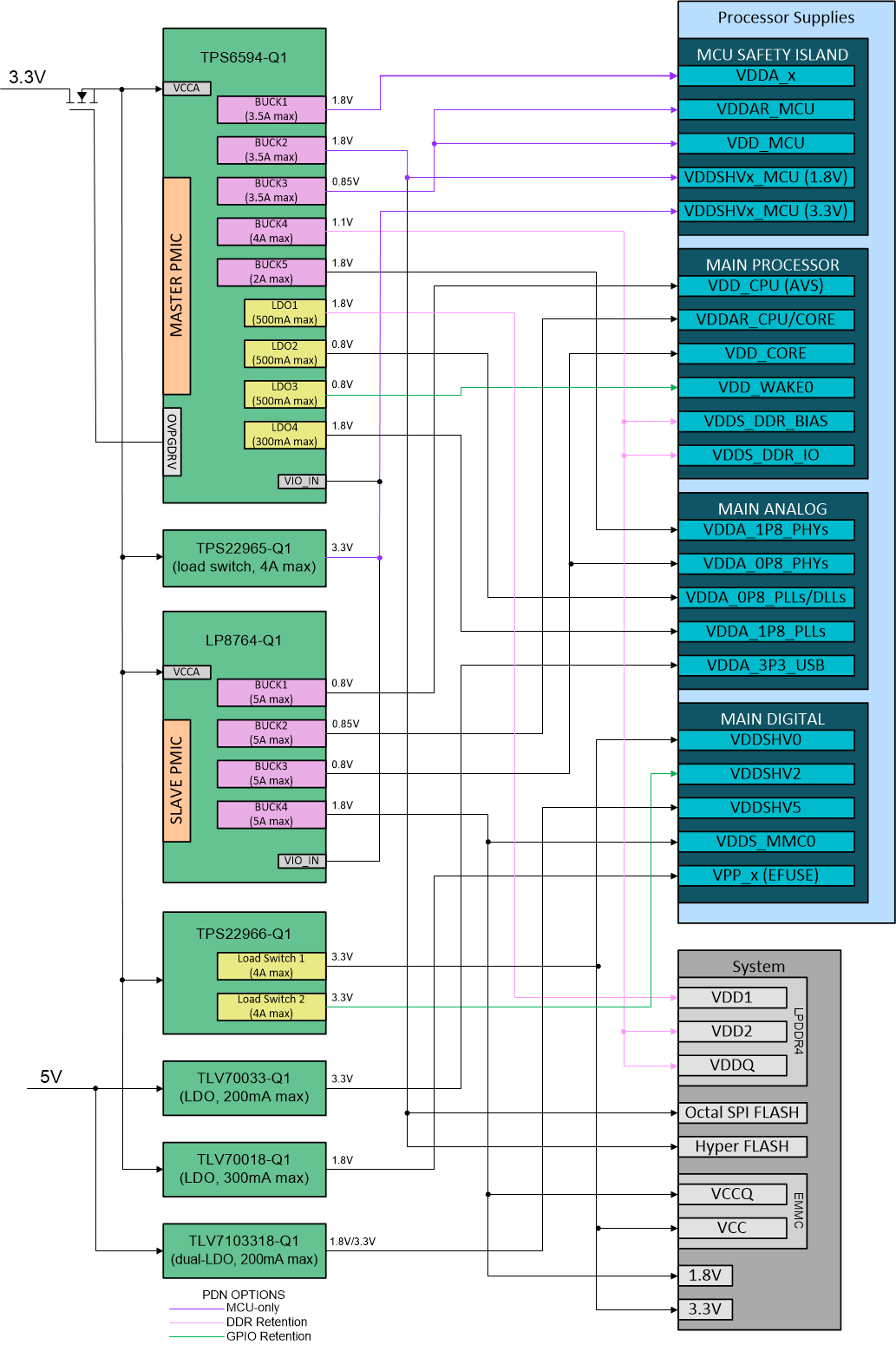SPRUIW7A October 2020 – February 2022
- Trademarks
- 1Introduction
- 2J7200 EVM Overview
- 3EVM User Setup/Configuration
-
4J7200 EVM Hardware Architecture
- 4.1 J7200 EVM Hardware Top Level Diagram
- 4.2 J7200 EVM Interface Mapping
- 4.3 I2C Address Mapping
- 4.4 GPIO Mapping
- 4.5 Power Supply
- 4.6 Reset
- 4.7 Clock
- 4.8 Memory Interfaces
- 4.9 MCU Ethernet Interface
- 4.10 QSGMII Ethernet Interface
- 4.11 PCIe Interface
- 4.12 USB Interface
- 4.13 Audio Interface
- 4.14 CAN Interface
- 4.15 FPD Interface (Audio Deserializer)
- 4.16 I3C Interface
- 4.17 ADC Interface
- 4.18 RTC Interface
- 4.19 Apple Authentication Header
- 4.20 JTAG Emulation
- 4.21 EVM Expansion Connectors
- 4.22 ENET Expansion Connector
- 5Functional Safety
- 6Revision History
4.5 Power Supply
Figure 4-3 shows the SoM’s power distribution system. The Power to the SoM is derived from the Dual Buck converter 12 V to 5.0 V/3.3 V on the Common Processor Board. The J7200 processor is powered from a TPS6594x + LP8764x PMIC solution, which is optimized for the J7200 to support a wide variety of use cases.
Buck regulator TPS62811-Q1 used for the generation of LPDDR4 IO power supply and DIP SW4.1 used for selecting the IO supply to support LPDDR4/4x (1.1 V/0.6 V).
 Figure 4-3 J7200 SOM Power Distribution Block
Diagram
Figure 4-3 J7200 SOM Power Distribution Block
Diagram